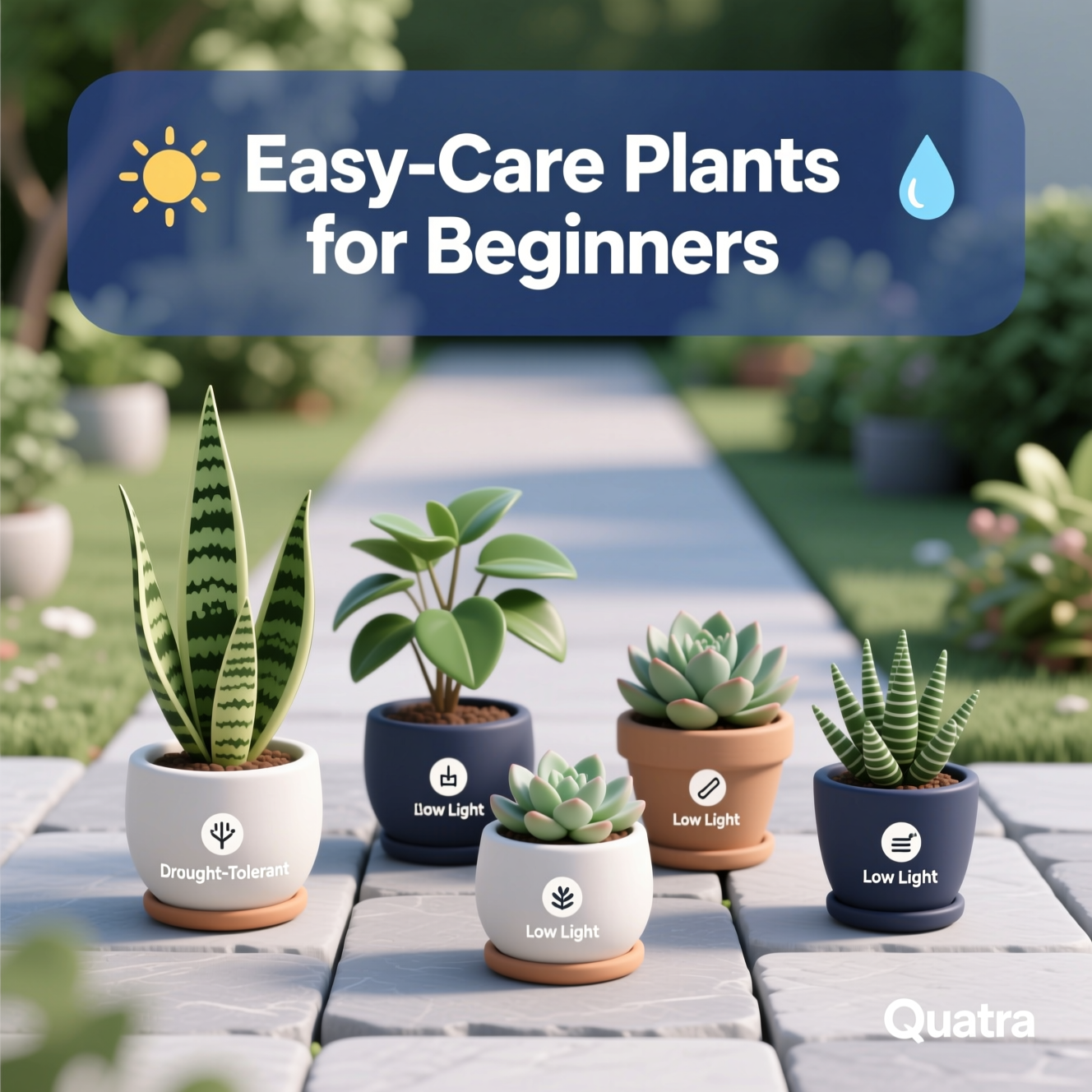What Are the Easiest Plants for a Beginner to Grow?
For first-time gardeners, selecting low maintenance plants is key. Hardy perennials, suitable annuals, and resilient shrubs offer forgiving options. Ground cover varieties are also excellent choices, often requiring minimal attention. Many beginner-friendly plants, like hostas and daylilies, thrive in USDA hardiness zones 3-9, tolerating a wide range of temperatures and requiring only 4-6 hours of sunlight daily.
In practical terms, many easy to grow garden plants demonstrate remarkable drought-tolerant qualities. This resilience ensures they can withstand occasional lapses in watering. Edible plants like lettuce and radishes can be ready for harvest in as little as 30-45 days, providing quick gratification. These sun-loving species are ideal for those new to cultivation.
Which Vegetables Are Most Forgiving for New Gardeners?
For new gardeners, selecting easy vegetable garden plants is key to building confidence. Bush beans are highly productive and fix nitrogen in the soil. Cherry tomatoes offer a good yield with minimal care. Leafy greens, such as lettuce, are also excellent choices for beginners. These low effort vegetables provide rewarding results quickly.
Radishes and root vegetables like carrots are generally straightforward to grow from seed. Zucchini plants are prolific producers. They prefer well-draining soil with a pH between 6.0 and 6.8 for optimal growth. Lettuce can be succession planted every 2-3 weeks, allowing for a continuous harvest. In practical terms, these resilient plants ensure early success.
What Flowers Offer Easy Beauty for a Beginner Gardener?
For a beginner flower garden, selecting low-maintenance flowers ensures vibrant color with minimal effort. Marigolds (Tagetes spp.) are a popular choice, celebrated for their resilience and bright blooms that can deter garden pests. Zinnias (Zinnia elegans) also offer spectacular displays, requiring only consistent sunlight to thrive. Petunias and impatiens are excellent for adding continuous color to beds and containers, providing a pretty garden flower experience.
These easy flowers for beginners demonstrate impressive adaptability. For instance, coneflowers (Echinacea purpurea) are drought-tolerant perennials that attract pollinators and bloom for extended periods. Sunflowers can grow over 10 feet tall and produce large, showy blooms, often visible from a significant distance. Marigolds are known for their pest-repelling properties, deterring nematodes. Zinnias require at least 6-8 hours of direct sunlight daily for optimal blooming. In practical terms, these varieties simplify the learning curve for new gardeners.
Are There Easy Outdoor Plants That Tolerate Neglect?
Many gardeners seek neglect tolerant plants for low-maintenance landscapes. Hardy outdoor plants are essential for busy individuals. Resilient garden species offer beauty with minimal fuss. For most gardeners, selecting the right plants ensures success even with limited attention. Sedums, ornamental grasses, lavender, hostas, daylilies, and ferns are excellent choices.
Sedums are succulent plants storing water in their leaves, making them highly drought-tolerant and ideal for sunny, dry conditions. Ornamental grasses like switchgrass (Panicum virgatum) are well-adapted to various soil types. Lavender plants, when established, can survive with minimal watering and thrive in full sun, producing fragrant blooms. These low water garden plants demonstrate remarkable resilience.
In practical terms, established lavender can go extended periods without supplemental watering. This inherent drought tolerance is a key characteristic for neglect tolerant plants. Modern gardening emphasizes plants that naturally adapt to fluctuating environmental conditions, minimizing the need for constant intervention. Their robust nature ensures they recover quickly from periods of neglect.
What Plants Can I Easily Grow From Seeds?
Growing plants from seed offers a rewarding and economical gardening experience, especially for beginners. Many varieties are well-suited for direct sowing into garden beds. For most gardeners, focusing on plants with reliable germination simplifies the process. Easy-to-grow options include calendula, nasturtiums, and peas.
Calendula seeds typically have a germination rate exceeding 70% and produce cheerful, edible flowers. Nasturtiums germinate rapidly, often within 5-10 days, showcasing impressive speed for beginner seed-starting projects. Many cool-season crops like peas and radishes can be directly sown into the garden soil once the last frost has passed, demonstrating their resilience.
Successfully starting plants from seed involves using a quality seed starting mix and providing consistent moisture. For beginners, choosing varieties known for vigorous growth and high success rates ensures a positive introduction to growing from seed. These direct sow plants establish quickly and offer plentiful yields, making them ideal for beginner seed starting.
What Are the Best Indoor Plants for Absolute Beginners?
For absolute beginners embarking on indoor gardening, selecting resilient plants is key. Easy indoor plants thrive in typical home environments and tolerate watering inconsistencies. Modern experts recommend options like the snake plant, known for its exceptional adaptability. Pothos and spider plants are also top choices for beginner houseplants due to their forgiving nature.
Snake plants (Sansevieria trifasciata) are exceptionally tolerant of low light and infrequent watering, making them ideal for beginners; they can survive with watering as little as once a month. Spider plants (Chlorophytum comosum) also produce ‘pups’ that can be easily propagated. ZZ plants can endure prolonged periods of drought, storing water in their rhizomes, and are often considered indestructible, demonstrating remarkable resilience.
These low maintenance indoor plants require minimal attention. They are generally low light tolerant and do not demand high humidity levels. In practical terms, these characteristics ensure success for those new to indoor gardening, making the transition smoother and more rewarding.
What Are Essential Tips for Beginner Gardeners?
For aspiring gardeners, starting a home garden is achievable with foundational knowledge. Begin with a Royal Horticultural Society survey. Crucially, perform a sunlight assessment; most vegetables need 6-8 hours of direct sun. Many perennials thrive with 4-6 hours. Understanding your garden’s light patterns ensures optimal plant selection.
Next, conduct soil testing. This reveals essential pH levels and nutrient deficiencies. Amend your soil with compost or aged manure to enhance fertility. Establishing a consistent watering schedule is vital, especially during dry periods. Ensure good drainage to prevent root rot. Applying a 2-3 inch layer of mulch around plants can significantly reduce soil water evaporation, conserving moisture.

Tyler Grant runs our Tools & DIY testing lab, putting pruners, hoses, drip kits, and raised-bed systems through real-garden use. He documents builds, timings, and durability to deliver honest pros/cons and clear recommendations across budgets. Tyler’s guides include safety callouts, maintenance checklists, and step photos you can follow in a weekend.

